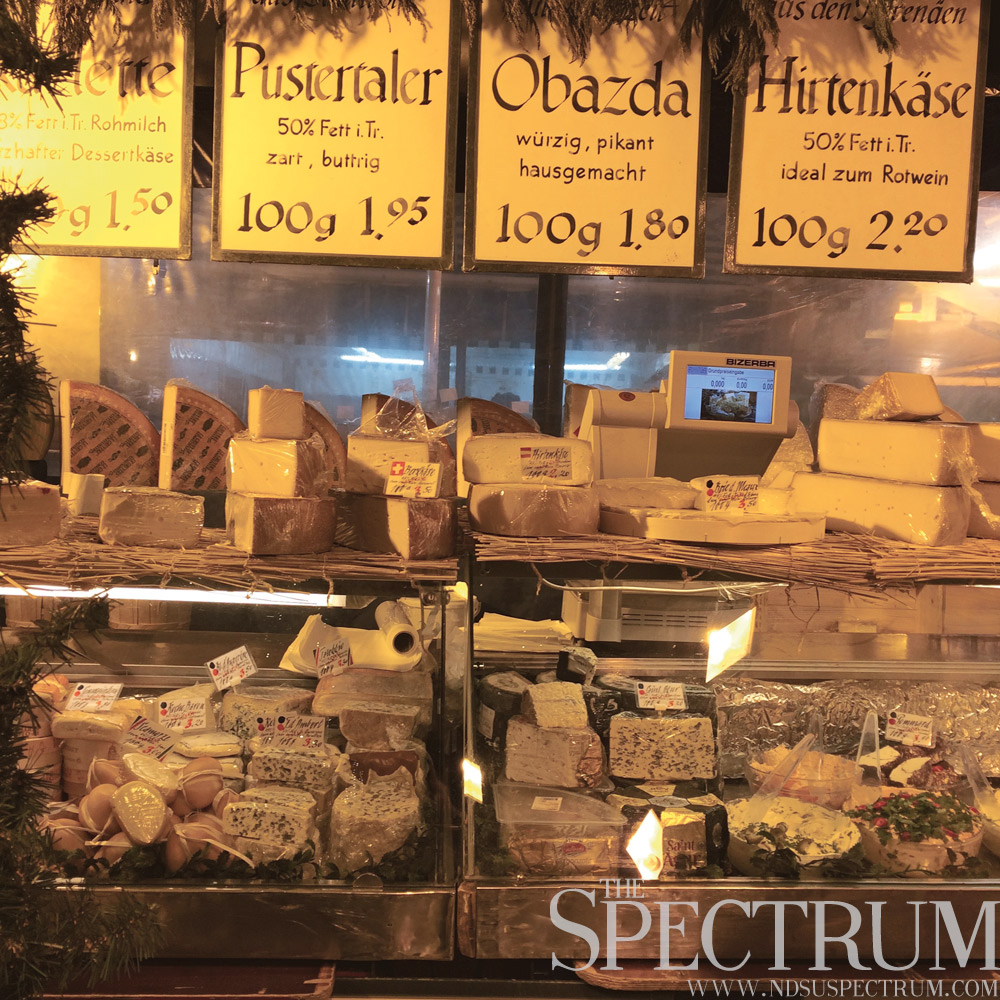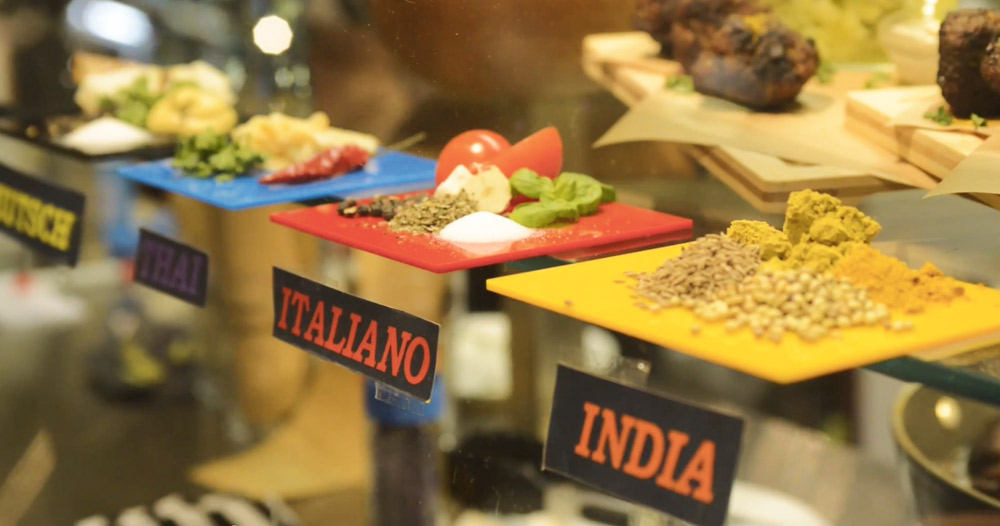
Markets offer specialized products from local vendors, increasing
the quality while offering better prices.
Of all the necessary steps to take when working toward cultural integration, there are few as enjoyable as diving into the culinary scene. With two German cities, Berlin and Munich, under my belt, the comparisons and differences between each city’s dining habits provides ideal insight to the space being explored.
Berlin’s international population lends itself advantageously to the food culture. Any regional genre of food one is looking for can be found in an accurate, high quality representation.
The Japanese, Turkish, Indian and traditional Bavarian cuisine have all matched or exceeded expectations, and the options are endless on a high and low key scale.
The farm-to-table trend has also occupied the highly efficient German capital, with my favorite restaurant thus far, Lokal, setting the pace. Think: steinköhlner over fresh vegetables and German Riesling on a Thursday night wind down.
Spanish tapas bars are another mainstay, and next up on my dietary to-do list. Based on local discussion, it seems that the representation of Mexican cuisine lacks, but is slowly improving as of late.
Germans, and particularly Berliners, love their Früstück (breakfast). A hefty number of brunch spots fill Kreuzberg, Neukölln and Friedrichshain to cater to the late night crowd that inhabits those neighborhoods. The variety is enormous, but usually offers American classics with Euro upgrades.

European café culture remains unexpired, and certainly did not miss Munich or Berlin. Fresh bread, espresso and pastries, especially traditional strudel, are guaranteed offerings in the warm environments.
And better yet, the slowed pace creates a pleasant work or conversational environment. Beginner’s tip: guests are expected to request their bill when finished in every dining setting – intentionally to prevent the feeling of being rushed from the establishment.
Café spaces adopt either a romantic, cozy atmosphere, or a clean and modernist feel – depending on the city and neighborhood. Ending Munich in the Haus der Kunst’s grandiose café – full of midcentury furniture and gilded ceilings – was an experience I don’t wish to quickly forget.
On a small side note, shelled peanuts and pretzel sticks feel like a stupidly luxurious indulgence in the smoky Kreuzberg bars. Berlin is fast, and finding time for full meals is sometimes a non-option, making the simplistic snacks a frequent dinnertime staple.
And the late night, post-club commuter snacking options are second-to-none. As already mentioned, the Turkish community caters to Berlin in many ways, but most popularly so in their street food offerings. Döner kepabs are a can’t miss in a Berlin experience.
Germans value local fare and communal activities, regardless of the season. Outdoor markets continue throughout the wintertime, and offer seasonal food products and goods from both local and regional retailers.
To cope with the chilly January temperatures, shoppers are encouraged to bring their findings into a number of heated beer gardens. You will find glühwein, espresso and obviously, beer. Music selections can range from deep house to what would resemble an epic, traditional Bavarian film score.
Generally, the food culture of each city provides insight to the tendencies and values of its inhabitants.
Munich, with its incomparable Bavarian cuisine and laidback, yet refined dining scene reflects the traditional values and wealth of the city. Berlin’s diversified options and fast pace sheds light on the city’s functional work hard, play harder attitude.
